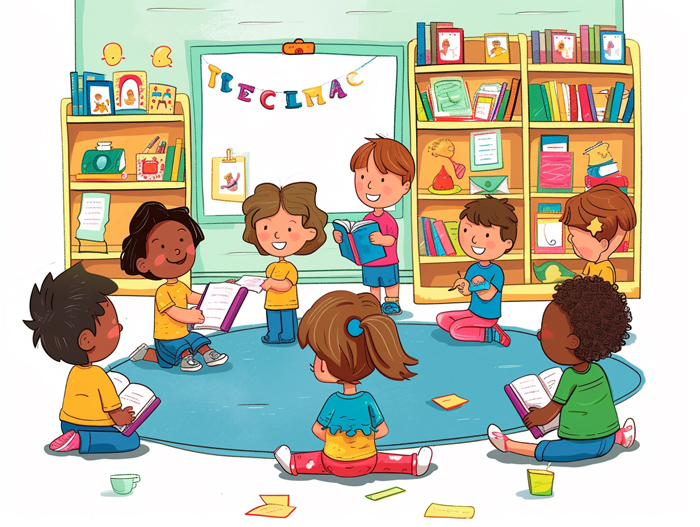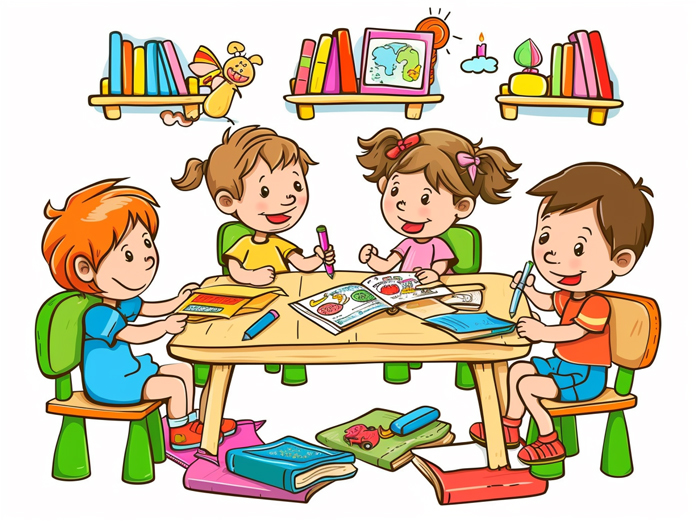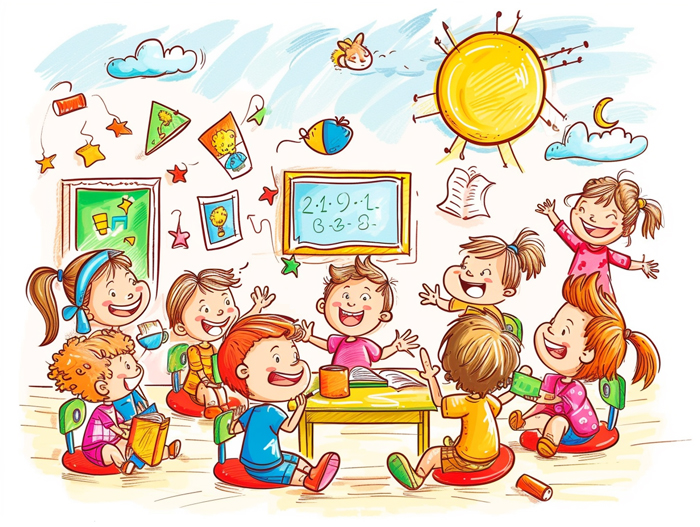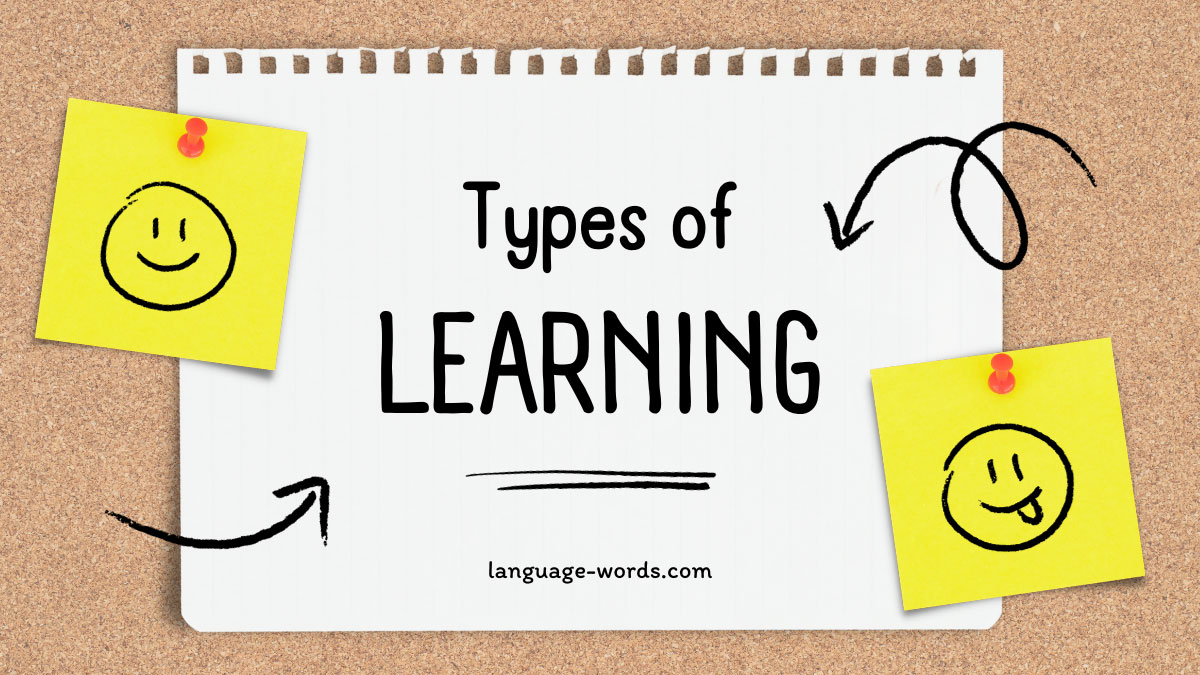Learning is a lifelong journey that takes many different forms. From the moment we are born, we begin to absorb information and develop new skills. But did you know that there are different types of learning? In this article, I’ll explore the various ways in which we learn and how they can impact our understanding and growth.
One type of learning is known as visual learning. This is when we process information through images and visual aids. Whether it’s watching a video, looking at a diagram, or studying a photograph, visual learners thrive on visual stimuli. In contrast, auditory learners prefer to learn through sound and spoken words. They absorb information best when it is presented to them through lectures, discussions, or audio recordings.
Another type of learning is kinesthetic learning, which involves physical movement and hands-on experiences. These learners excel when they can actively engage with their environment, whether it’s through experiments, role-playing, or interactive activities. Lastly, there is verbal learning, where individuals learn best through reading and writing. They find comfort in words, whether it’s reading a book, writing notes, or engaging in written exercises.
In this article, I’ll delve deeper into each type of learning, exploring their characteristics, benefits, and how they can be utilized to enhance our educational experiences. So, whether you’re a visual learner, auditory learner, kinesthetic learner, or verbal learner, this article will provide valuable insights to help you understand your learning style and optimize your learning journey.
What is Learning?
When it comes to understanding how we acquire new knowledge and skills, it’s important to explore the concept of learning. Learning is a fundamental process that allows us to grow and develop throughout our lives. It’s how we acquire information, gain new insights, and improve our abilities.

Learning is an ongoing and dynamic process. It involves the acquisition, processing, and application of new concepts, information, or skills. Each person learns in their own unique way, influenced by various factors such as their preferred learning style, environment, and personal experiences.
Learning is not limited to a specific timeframe or age group. It occurs at all stages of life, from early childhood to adulthood. Whether it’s learning to crawl as a baby, mastering a musical instrument as a teenager, or acquiring professional expertise as an adult, learning is an essential part of our existence.
Learning involves active engagement with the material. It requires the brain to process new information, make connections, and apply what has been learned to real-life situations. Simply reading or listening to information without actively engaging with it often leads to limited retention and understanding.
Learning is a continuous process of growth and development. It allows us to expand our knowledge, refine our skills, and adapt to the ever-changing world around us. Through learning, we can open doors to new opportunities, enhance our problem-solving abilities, and broaden our perspectives.
Learning can take place in various settings and through different methods. From traditional classroom-based learning to experiential learning through hands-on activities or even online courses, there are multiple avenues for acquiring knowledge and skills. Each individual may have a preferred learning method that suits their unique learning style and preferences.
Learning is a dynamic and ongoing process that enables us to acquire new knowledge, skills, and insights. It is not limited to a specific timeframe or age group and involves active engagement with the material. Learning is a continuous journey that fosters personal growth and development. Understanding the concept of learning is essential for educators and individuals alike, as it lays the foundation for effective teaching and lifelong learning.
Types of Learning
As an expert blogger with years of experience, I understand the importance of learning and its various forms. In this section, I will delve into the different types of learning that exist, each with its own unique characteristics and benefits.

Cognitive Learning
Cognitive learning refers to the process of acquiring knowledge and understanding through mental processes such as thinking, reasoning, and problem-solving. It involves the active engagement of the mind and allows for the assimilation and organization of new information. Cognitive learning can take place through activities like reading, listening, and observing, enabling individuals to develop critical thinking and analytical skills.
Behavioral Learning
Behavioral learning focuses on the connection between actions and consequences. It emphasizes that behaviors can be learned through reinforcing or punishing stimuli. This type of learning often involves repetition and conditioning, promoting desirable behaviors and discouraging undesirable ones. Through repetitive practice and reinforcement, individuals can acquire new behaviors and skills.
Social Learning
Social learning emphasizes the influence of social interactions on the learning process. It recognizes that people can learn by observing and imitating others’ behaviors and actions. Through social learning, individuals can acquire new skills, values, and attitudes by watching others and modeling their behavior. This type of learning is particularly important in early childhood education, where children learn from their peers, parents, and teachers.
Experiential Learning
Experiential learning is a hands-on approach to learning that emphasizes direct engagement and involvement with the subject matter. It encourages individuals to actively participate in real-world experiences, allowing them to apply theoretical knowledge in practical settings. This type of learning promotes critical thinking, problem-solving, and the development of practical skills.
Collaborative Learning
Collaborative learning involves working together in groups to achieve a common goal. It encourages active participation, communication, and cooperation among individuals. Through collaboration, learners can share ideas, learn from each other, and develop important social skills. This type of learning fosters teamwork, enhances communication skills, and promotes a sense of community.
Reflective Learning
Reflective learning involves self-assessment and introspection to gain deeper insights into one’s learning process. It encourages individuals to reflect on their experiences, identify strengths and weaknesses, and set goals for improvement. Reflective learning promotes self-awareness, critical thinking, and metacognitive skills, allowing learners to become more self-directed and adaptable in their learning journey.
Each type of learning offers unique benefits and caters to different learning styles and preferences. By understanding these various forms of learning, educators and individuals can create effective learning environments and strategies that promote engagement, understanding, and lifelong learning for all.
Factors Influencing Learning

Motivation
Motivation plays a crucial role in the learning process. When students are motivated, they are more engaged, focused, and willing to put in the effort to learn. Here are some factors that can influence motivation:
- Relevance: Students are more motivated to learn when they see the relevance of the subject matter to their lives or interests.
- Autonomy: Allowing students to have a certain level of control and choice in their learning can increase their motivation.
- Success: Achievement and recognition for their efforts can boost students’ motivation to continue learning.
Learning Environment
The learning environment plays a significant role in shaping students’ learning experiences. A positive and conducive environment can enhance learning outcomes. Here are some factors that can influence the learning environment:
- Supportive relationships: Building positive relationships between teachers and students, as well as encouraging collaboration and respect among peers, creates a supportive learning environment.
- Physical space: A well-organized and comfortable classroom can promote concentration and engagement.
- Resources: Access to relevant learning materials, technology, and other resources can enhance the learning experience.
Learning Style
Understanding students’ learning styles can help educators tailor their teaching methods to meet individual needs. People have different preferences when it comes to learning. Here are some common learning styles:
- Visual learners: Visual learners grasp information better through visual aids, such as diagrams, charts, and pictures.
- Auditory learners: Auditory learners learn best through listening and verbal explanations, such as lectures or discussions.
- Kinesthetic learners: Kinesthetic learners prefer hands-on activities and physical movement to understand and retain information.
Prior Knowledge
Prior knowledge serves as a foundation for new learning. When connecting new information to what students already know, they can better understand and retain it. Here’s how prior knowledge can influence learning:
- Activating prior knowledge: Identifying and activating students’ prior knowledge at the beginning of a lesson can help them make connections and build upon their existing understanding.
- Schema building: Students can organize new information within their existing knowledge framework, facilitating comprehension and retention.
- Misconceptions: Addressing and correcting misconceptions is crucial to ensure accurate learning and prevent misunderstandings.
By considering these factors, educators can create a learning environment and implement strategies that support student motivation, cater to different learning styles, and build upon prior knowledge.
Benefits of Different Learning Types

Cognitive Learning Benefits
When it comes to cognitive learning, the benefits are numerous. This type of learning focuses on the development of thinking skills, problem-solving abilities, and critical thinking. Some of the key benefits include:
- Improved Memory: Cognitive learning techniques help improve memory retention and recall, allowing learners to better retain and apply information.
- Enhanced Analytical Skills: Cognitive learning encourages learners to analyze information, draw conclusions, and make connections between different concepts.
- Developed Problem-Solving Abilities: Cognitive learning equips learners with the skills to identify and solve complex problems effectively.
Behavioral Learning Benefits
Behavioral learning, also known as stimulus-response learning, offers its own set of advantages. This type of learning focuses on shaping behavior through positive reinforcement or consequences. Here are some benefits of behavioral learning:
- Effective Behavior Management: Behavioral learning techniques can help teachers manage student behavior effectively, promoting a positive and conducive learning environment.
- Consistent Performance: By reinforcing desired behaviors, behavioral learning helps students maintain consistently good performance.
- Improved Self-Discipline: Behavioral learning fosters the development of self-discipline and self-control, which are essential traits for success in various areas of life.
Social Learning Benefits
Social learning, as the name suggests, takes place through social interactions and observation of others. This learning type offers several advantages that promote holistic development:
- Enhanced Communication Skills: Social learning encourages interaction and cooperation, which improves verbal and non-verbal communication skills.
- Increased Empathy: By observing and understanding others, social learning helps develop empathy and a better understanding of different perspectives.
- Improved Collaborative Abilities: Social learning prepares learners for teamwork and collaboration by fostering skills such as active listening, cooperation, and compromise.
Experiential Learning Benefits
Experiential learning focuses on learning through direct experience and hands-on activities. This type of learning offers unique advantages that traditional classroom learning may not provide:
- Real-World Application: Experiential learning allows learners to apply theoretical concepts in real-world settings, making the learning experience more practical and relevant.
- Greater Engagement: Learners are actively involved in the learning process, which leads to increased engagement and motivation.
- Enhanced Problem-Solving Skills: Through experiential learning, learners develop problem-solving skills by facing challenges, making decisions, and learning from their experiences.
Collaborative Learning Benefits
Collaborative learning emphasizes working together in groups to achieve common goals. This approach offers numerous benefits:
- Enhanced Communication and Social Skills: Collaborative learning provides opportunities for students to learn from each other, improving their communication and social skills.
- Increased Engagement and Motivation: Working together in groups fosters a sense of ownership and motivation, leading to higher levels of engagement.
- Diverse Perspectives: Collaborative learning exposes learners to different perspectives, promoting critical thinking and creativity.
Reflective Learning Benefits
Reflective learning involves evaluating and analyzing one’s experiences and emotions to gain a deeper understanding. This type of learning offers several benefits:
- Improved Self-Awareness: Reflective learning encourages learners to reflect on their thoughts, emotions, and actions, leading to increased self-awareness.
- Enhanced Metacognitive Skills: By reflecting on their learning process, learners develop metacognitive skills, such as planning, monitoring, and evaluating their own learning.
- Deeper Understanding: Reflective learning promotes a deeper understanding of subject matter as learners actively think and reflect on what they have learned.
These various learning types offer unique benefits and cater to different styles of learning. By leveraging these different approaches, teachers can create engaging and effective learning experiences that meet the diverse needs of their students.
Conclusion
In this article, I have explored the concept of learning and its significance in our lives. Learning is not a one-time event but a continuous process that involves acquiring, processing, and applying new knowledge and skills. It is a dynamic process that can occur at any age and in various settings.
Throughout the article, I have discussed different types of learning, including cognitive, behavioral, social, experiential, collaborative, and reflective learning. Each of these learning types offers unique benefits that contribute to holistic development. Cognitive learning enhances memory and problem-solving abilities, while behavioral learning focuses on behavior management. Social learning improves communication skills, experiential learning emphasizes real-world application, collaborative learning increases engagement and motivation, and reflective learning promotes self-awareness.
By understanding and leveraging these different learning types, educators can create engaging and effective learning experiences that cater to the diverse needs of their students. It is important to recognize that everyone has their own preferred learning style, and by incorporating a variety of learning approaches, we can create a rich and inclusive learning environment.
Embracing different types of learning is key to fostering a love for learning and promoting lifelong growth and development.

